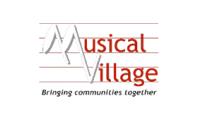
The letters CPR stand for cardiopulmonary resuscitation. The term embraces all the procedures, from basic first aid to the most advanced medical interventions that can be used to restore the breathing and circulation in someone whose heart and breathing have stopped.
How To Do CPR
STEP 1
Give 30 chest compressions
- Place the heel of one hand in the centre of the casualty's chest and the heel of the other on top. Interlock your fingers.
- Press down on the sternum, 5 to 6 cms (2 to 2.5 inches), 30 times. After each compression release the pressure but don't remove your hands.
- Do this about 100 to 120 times per minute (around 2 per second)
STEP 2
Give 2 rescue breaths (Continue compressions if you can't do rescue breaths.)
- Open their airway.
- Pinch their nose closed, breathe in, cover their mouth with yours and breathe steadily into their mouth. 2 rescue breaths should only take 5 seconds.
- Make sure their chest rises and falls.
STEP 3
Repeat 30 compressions and then 2 rescue breaths until:
- Professional help takes over
- They cough, move and breathe normally, or,
- You become exhausted
In the event an AED (Defibrillator) arrives:
- If an automated External Defibrillator arrives – continue CPR and follow the AED instructions (stopping and restarting CPR as advised by the AED)
Why do CPR?
Currently only 10% of people survive a community cardiac arrest. This is frequently because early resuscitation is not started. Early CPR will increase the chance of survival to 50%.
Each minute without CPR means that a further 10% of people will die and 10 minutes without heart output or any resuscitation is almost always fatal.
Where to Learn CPR?
There are many courses around to help you learn CPR. Nationally these courses are provided through such organisations as the St Johns Ambulance Service and the British Heart Foundation.
Within Leicestershire (and Rutland) we have created a collaborative group to provide CPR training to all secondary schools, and can provide hands-on training to sports facilities and some businesses.
Further Information
-
CPR & First Aid Training Courses
-
A great FAQ section on CPR
-
CPR Training Videos

































































